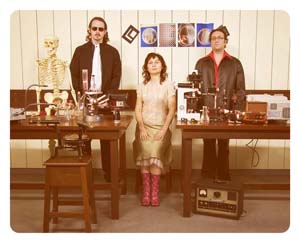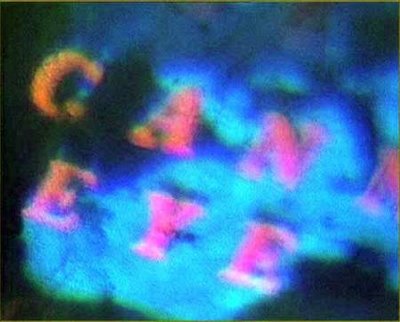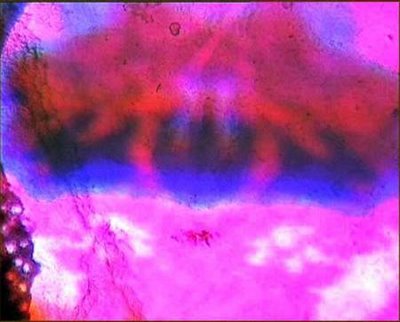
The Living Screen is a primitive Bio-Kino toy, designed to travel the side show alleys of art. Peer thru the Bio-Projector and experience the astounding 1/2 millimetre projection, as it transforms with the living canvas. Take savage pleasure in how the screen made from blood Splatters the dead back to life. Delight in primeval horror, as the Cellular Dentata lurches towards you for a bite. Or look awry, as the Monstrous Other, gazes back into your eye.
The Living Screen project produces new poetics, made possible by fusing bio-technology into a living cinematic apparatus. It embodies and anticipates renewed cinematic techniques and modes of expression, while also offering an alternative approach to understanding Bio-Art, which is, ‘Bio-Art as a Freak Show’.
The project re-travels early cinema history and brings film theory into play to approach ones engagement with a Bio-Kino. Screens are grown or scavenged from different tissue sources and Nano-Movies are projected over these living canvases, via the Bio-Projector. (The projection is 25-50 µ (microns) in size)

The Living Screen is a new species, a living cinematic apparatus. When we gaze through it, we are engaging with a machine-organism. This work is a research and development project exploring what occurs when we cinematically engage with a living screen. It employs film theory to bring into question ones spectatorship with Bio-Kino.
The screens are alive, transform, react and change over time and eventually die. Therefore, it contort the projected Nano-Movie in as yet – unknown ways, and confront the spectators with issues such as life, death, virtuality and reality.

The Living Screen has many connections to primitive cinema, early motion pictures that pre-date 1905 that fall under the category of the ‘cinema of attractions’. Tom Gunning defines the ‘cinema of attractions’ as a form of confrontation that addresses the audience directly. “Rather than being an involvement with narrative action or empathy with character psychology, the cinema of attractions solicits a highly conscious awareness of the film image engaging with the viewers’ curiosity.”
The screens will transform, react and change over time and eventually die. This is the confrontation that the spectator must face. “Confrontation rules the ‘cinema of attractions’ in both the form of its films and their mode of exhibition. The directness of this act of display allows an emphasis of the thrill itself – the immediate reaction of the viewer.” What thrill will the spectator receive when it clearly confronts the spectator about life, death and the Other.
Fairgrounds and vaudeville houses were where early cinema found its audiences. It was also a form of safe house for the Other. With Bio-Art proliferating throughout the world, the art galleries of today are no less a freak show, as is The Living Screen.
Stills taken from The Curse of the Uncanny Eye : The Cornea Screen
Starring Barbara Creed as the Monstrous Other
Bio-Kino, a project by Tanja Visosevic, Guy Ben Ary and Bruce Murphy
Digged at Régine´s Place, where wonders grow on trees
(a lady who yet not know what she asked for :) )
No comments:
Post a Comment